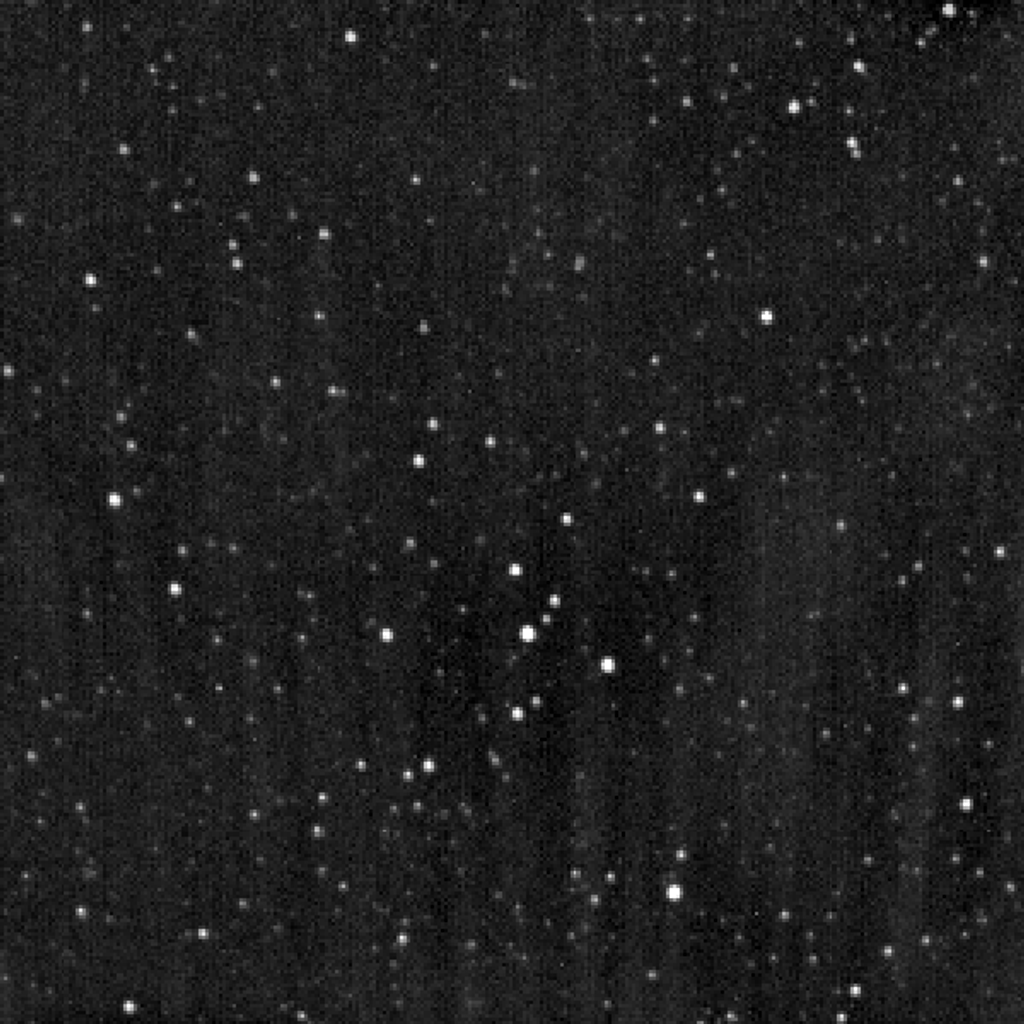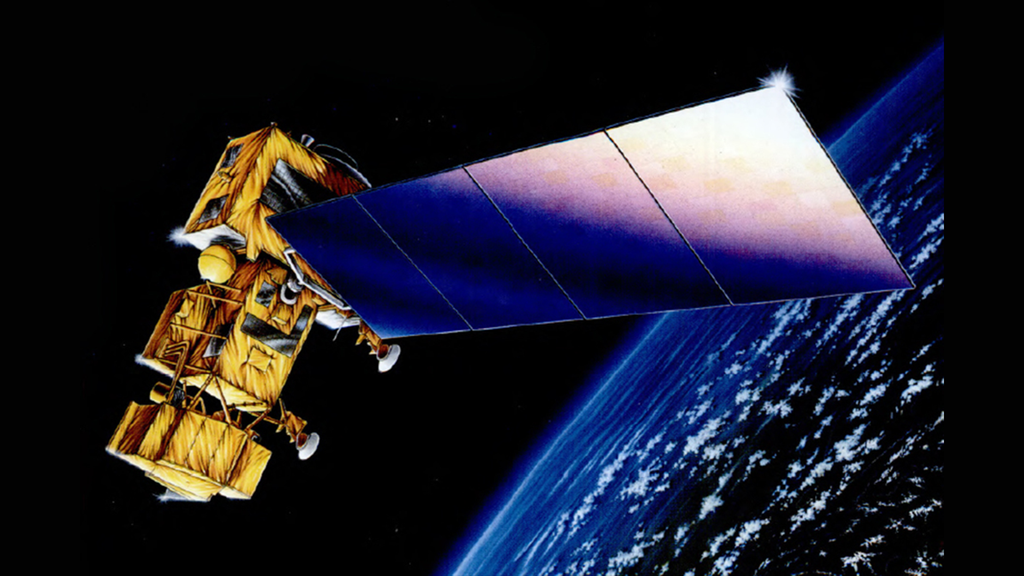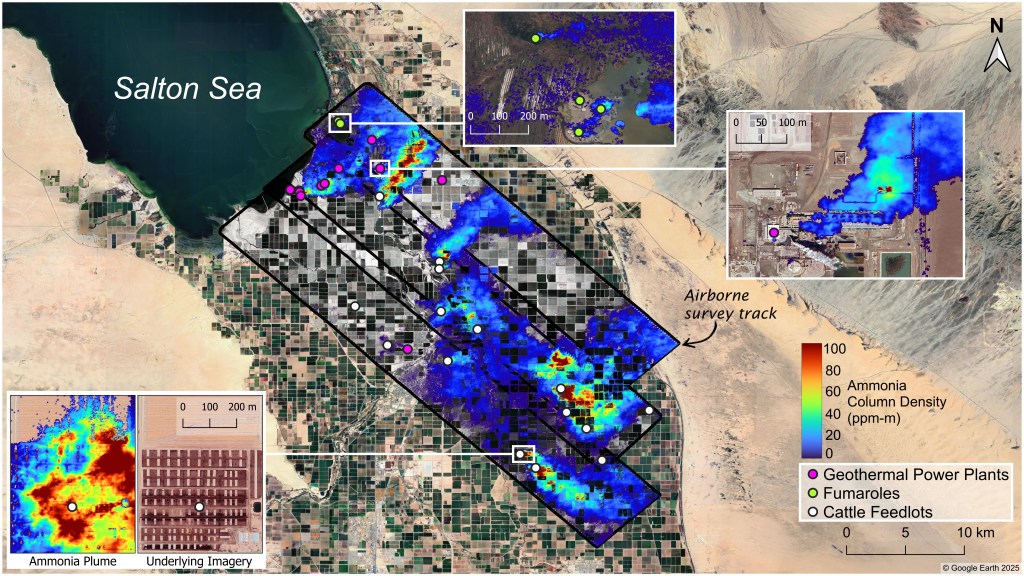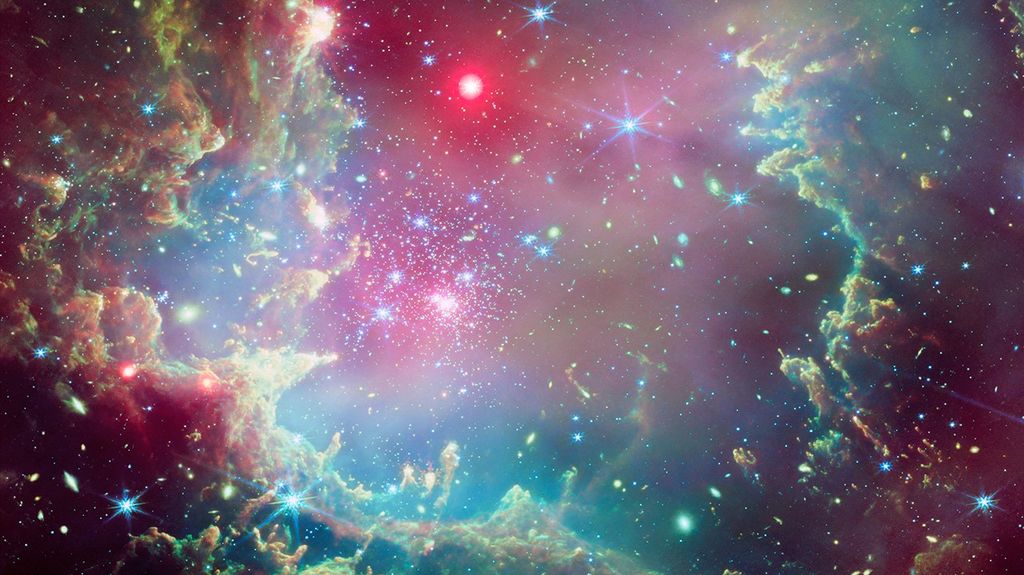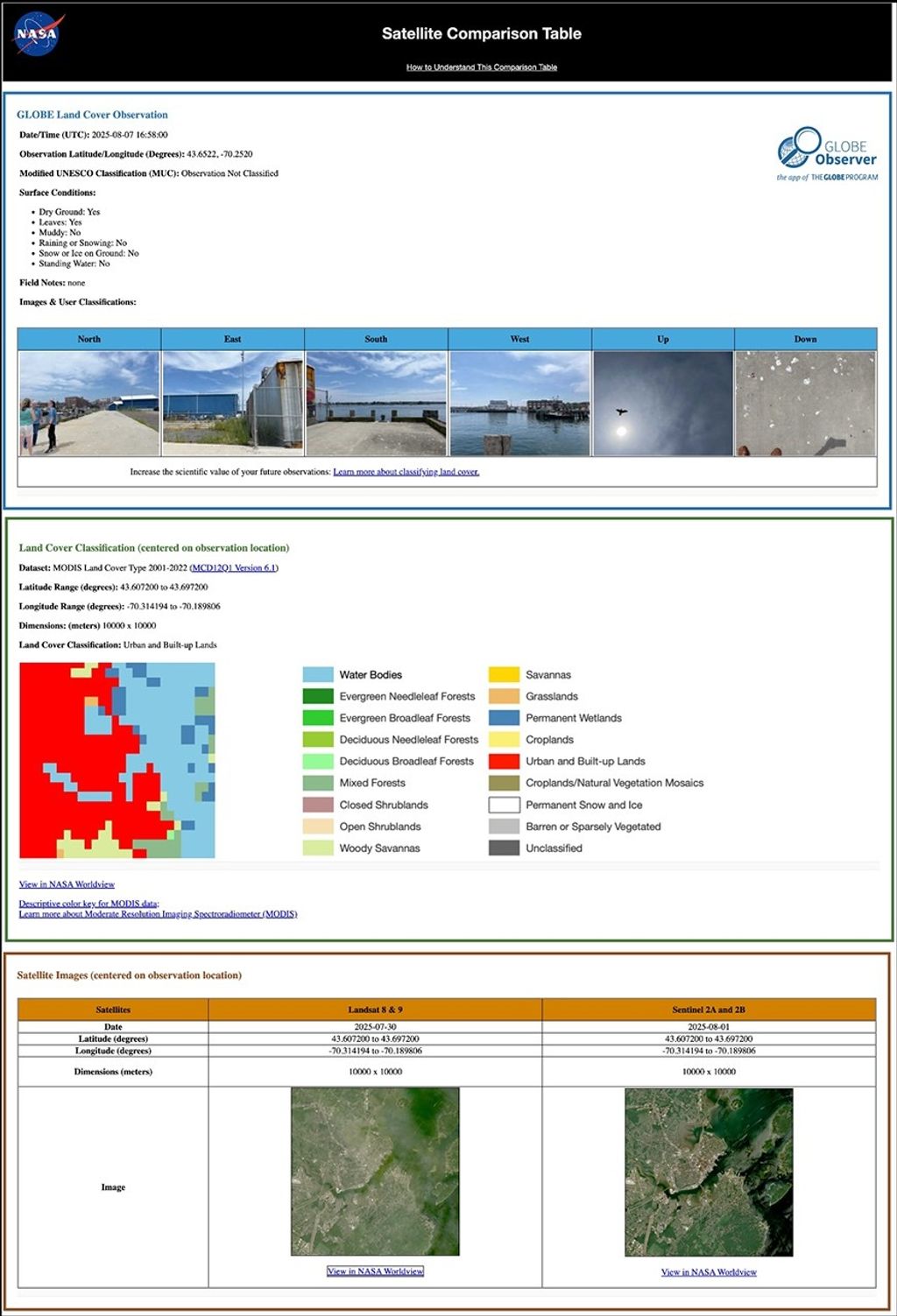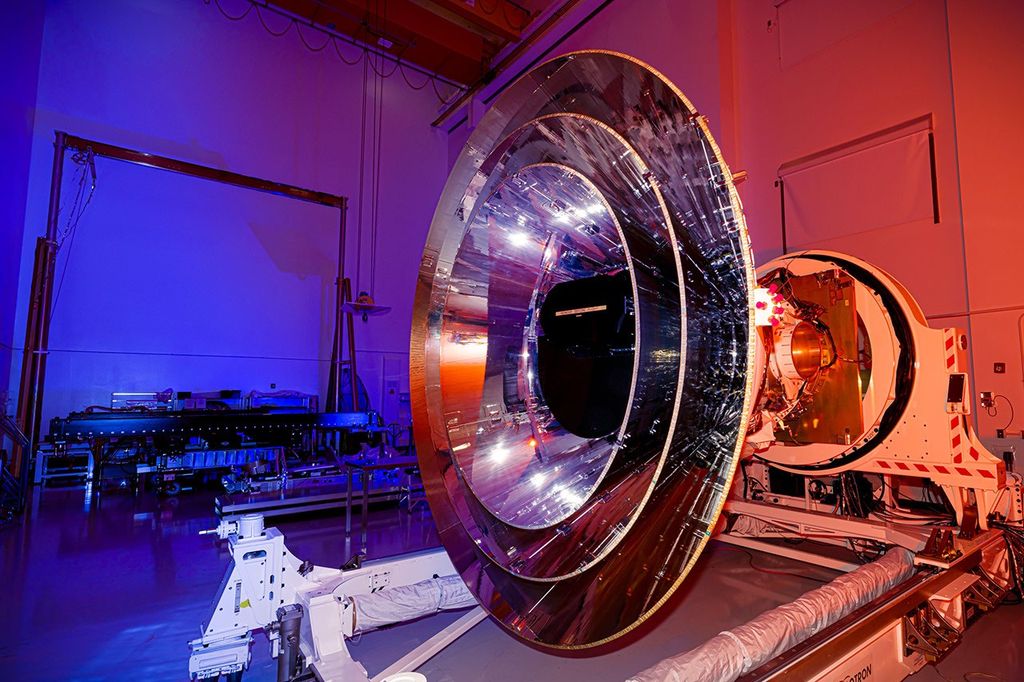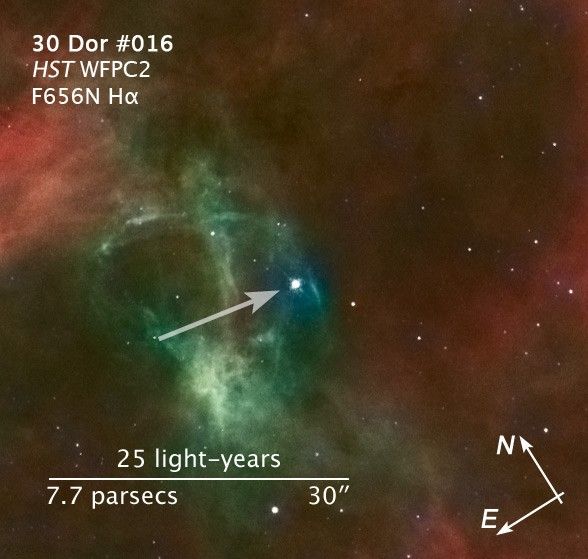1 min read
Hubble Observations of Massive Stars in the Large Magellanic Cloud

This is the Hubble Space Telescope Cosmic Origins Spectrograph (COS) observation of 30 Dor #016 compared with one by the Hubble Space Telescope Imaging Spectrograph (STIS) of the similar star HDE 269810, also in the Large Magellanic Cloud.
The stellar-wind features of helium, carbon, oxygen, and nitrogen are identified by their chemical symbols above; the roman numerals indicate the ionization stages, i.e., the number of electrons removed plus one. ("I" would indicate the neutral atom.) The broad emission components plus blue-shifted absorption are diagnostics of the stellar winds; the absorption forms along the line of sight to the stellar disk, where the wind is approaching us at its full speed. The O V line is a unique feature of the hottest (O2-O3) stars.
The science figure is from C. Evans (Royal Observatory Edinburgh) and his runaway star research team's study, published on May 5, 2010 in the online issue of The Astrophysical Journal Letters.
About the Object
- R.A. PositionR.A. PositionRight ascension – analogous to longitude – is one component of an object's position.05h 37m 8.87s
- Dec. PositionDec. PositionDeclination – analogous to latitude – is one component of an object's position.-69° 7' 20.35"
- ConstellationConstellationOne of 88 recognized regions of the celestial sphere in which the object appears.Dorado
- DistanceDistanceThe physical distance from Earth to the astronomical object. Distances within our solar system are usually measured in Astronomical Units (AU). Distances between stars are usually measured in light-years. Interstellar distances can also be measured in parsecs.170,000 light-years (52,000 parsecs)
About the Data
- Data DescriptionData DescriptionProposal: A description of the observations, their scientific justification, and the links to the data available in the science archive.
Science Team: The astronomers who planned the observations and analyzed the data. "PI" refers to the Principal Investigator.The 30 Doradus "runaway" star study is based on Hubble COS data from proposal 11484: G. Hartig (STScI), T. Delker (Ball Aerospace), C. Keyes (STScI), D. Sahnow (Johns Hopkins University), and S. Osterman (University of Colorado, Boulder). Authors of the 30 Doradus "runaway" star science paper: C. Evans (UK Astronomy Technology Center/Royal Observatory Edinburgh), N. Walborn (STScI), P. Crowther (University of Sheffield, UK), V. Hénault-Brunet (University of Edinburgh/Royal Observatory Edinburgh), D. Massa (STScI), W. Taylor (University of Edinburgh/Royal Observatory Edinburgh), I. Howarth (University College London), H. Sana (European Southern Observatory, Santiago, Chile/University of Amsterdam), D. Lennon (STScI), and J. van Loon (Keele University, UK). - InstrumentInstrumentThe science instrument used to produce the data.HST>COS
- Exposure DatesExposure DatesThe date(s) that the telescope made its observations and the total exposure time.July 20-25, 2009, Exposure Time: 2.8 hours
- FiltersFiltersThe camera filters that were used in the science observations.G130M (UV) and G160M (UV)
- Object NameObject NameA name or catalog number that astronomers use to identify an astronomical object.30 Dor #016
- Object DescriptionObject DescriptionThe type of astronomical object.Massive Runaway Star in the Large Magellanic Cloud
- Release DateMay 11, 2010
- Science ReleaseHubble Catches Heavyweight Runaway Star Speeding from 30 Doradus
- Credit
Related Images & Videos
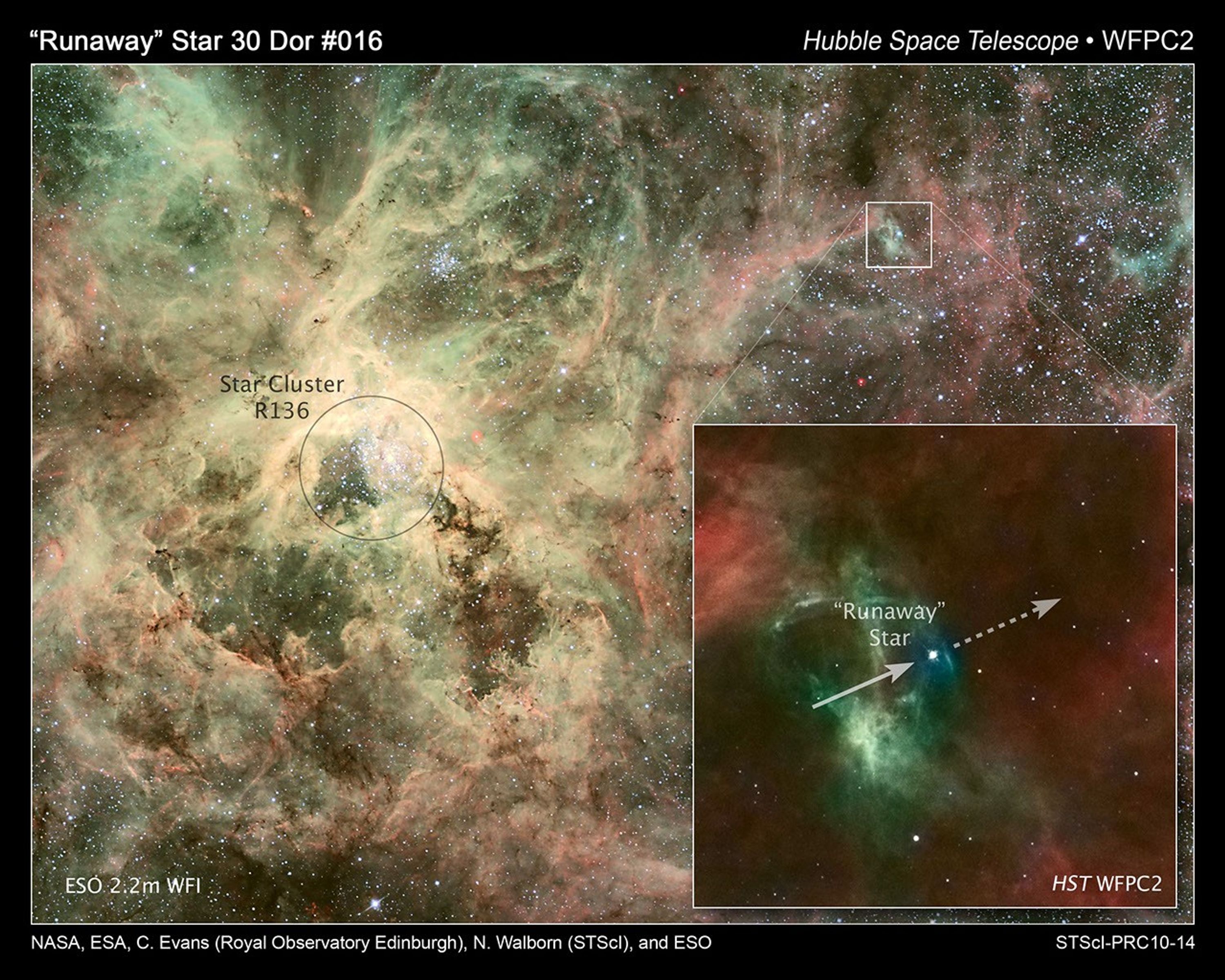
Astronomers Nab Runaway Star
This image of the 30 Doradus nebula, a rambunctious stellar nursery, and the enlarged inset photo show a heavyweight star that may have been kicked out of its home by a pair of heftier siblings. In the inset image at right, an arrow points to the stellar runaway and a dashed...
Share
Details
Claire Andreoli
NASA’s Goddard Space Flight Center
Greenbelt, Maryland
claire.andreoli@nasa.gov






